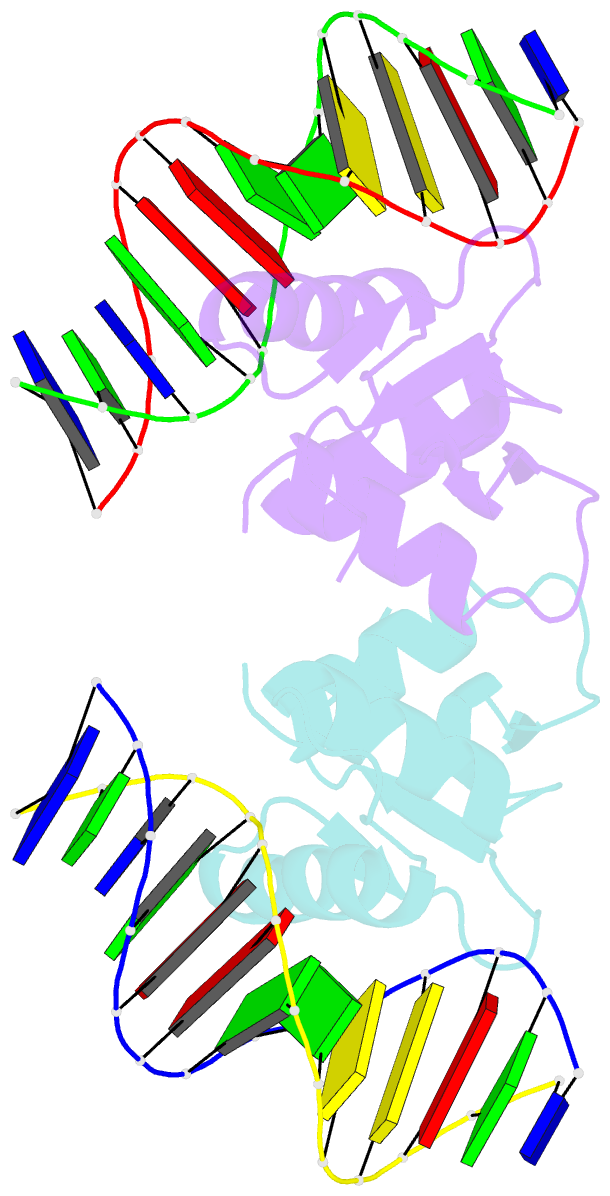Summary information and primary citation
- PDB-id
- 1dux; SNAP-derived features in text and JSON formats;
DNAproDB
- Class
- transcription-DNA
- Method
- X-ray (2.1 Å)
- Summary
- Elk-1-DNA structure reveals how residues distal from DNA-binding surface affect DNA-recognition
- Reference
- Mo Y, Vaessen B, Johnston K, Marmorstein R (2000): "Structure of the elk-1-DNA complex reveals how DNA-distal residues affect ETS domain recognition of DNA." Nat.Struct.Biol., 7, 292-297. doi: 10.1038/74055.
- Abstract
- SAP-1 and Elk-1 are members of a large group of eukaryotic transcription factors that contain a conserved ETS DNA binding domain and that cooperate with the serum response factor (SRF) to activate transcription of the c-fos protooncogene. Despite the high degree of sequence similarity, which includes an identical amino acid sequence for the DNA recognition helix within the ETS domain of these proteins, they exhibit different DNA binding properties. Here we report the 2.1 ¿ crystal structure of the ETS domain of Elk-1 bound to a high affinity E74 DNA (E74DNA) site and compare it to a SAP-1-E74DNA complex. This comparison reveals that the differential DNA binding properties of these proteins are mediated by non-conserved residues distal to the DNA binding surface that function to orient conserved residues in the DNA recognition helix for protein-specific DNA contacts. As a result, nearly one-third of the interactions between the protein recognition helix and the DNA are different between the SAP-1 and Elk-1 DNA complexes. Taken together, these studies reveal a novel mechanism for the modulation of DNA binding specificity within a conserved DNA binding domain, and have implications for how highly homologous ETS proteins exhibit differential DNA-binding properties.





